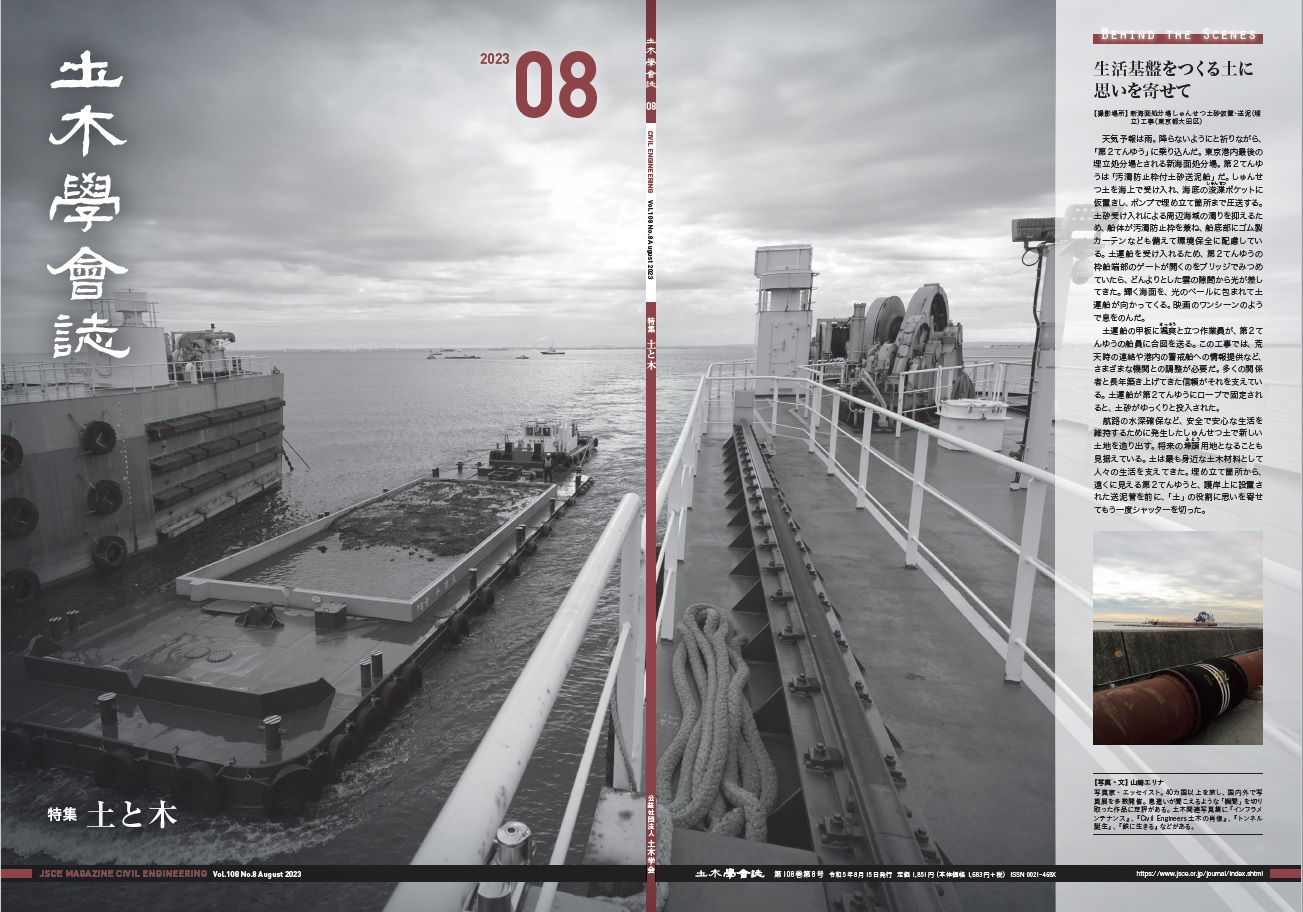JSCE Magazine Summary & Index
Latest Magazine
vol.108 No.8 August 2023

Soils and woods
“Civil engineering” is defined as the engineering for citizens or the work to provide an environment with specific basic standards for people to spend their cultural lives, by the Japan Society of Civil Engineers, JSCE. Although the term “civil” indicates “citizens” and “culture” in English, the Japanese word “DOBOKU” combines two letters of “soils” and “woods” to represent civil engineering. This notation is said to be derived from an ancient Chinese philosophy that described civil engineering as ensuring safe human life by piling up soils and building with woods. Soils and woods have been widely used as a component of infrastructures such as roads, aqueducts, and ports. They contributed to
land conservation against natural disasters and revitalization of regional industries since ancient times before steel and concrete were commonly used. Nowadays, soils and woods are remarkably evolving as infrastructure materials incorporating the latest modern science and technology. This special issue focuses on soils and woods, which became the origin of the Japanese word for “civil engineering”, by reviewing the historical usage applied for various purposes and the progress of civil engineering materials and projecting future use.

